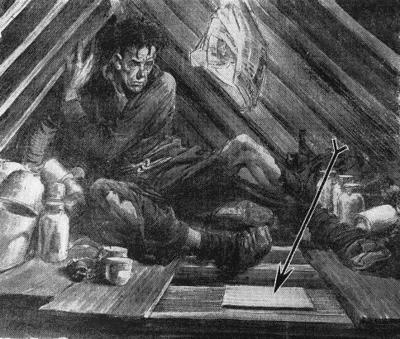The dark tale of the Denver Spider Man is quite different than that of the crime-stopping, live-saving Marvel super hero. Instead, this 'Spider Man' secretly hid inside his victim’s house before and after committing a murder.
Theodore Edward Coneys, later dubbed the Denver Spider Man by officials for his ghoulish appearance, was an American drifter from Illinois, born in 1882. Following the murder of Phillip Peters, Coneys ended up living in his victim’s Colorado home. Victim Phillip Peters was a Denver & Rio Grande Western Railroad retiree who lived with his wife, Helen, in their home on West Moncrieff Place in Denver.
Their paths would cross with that of Coneys when the Peters started willingly welcome Coneys into their home for evening dinners following the death of his sick mother in 1911. However, when the Peters' house was left vacant during Helen’s hospitalization for a broken hip decades later, Coneys secretly moved in on a more permanent basis.
Coneys broke into the Peters’ home in September of 1941 to steal money and food, ultimately discovering a small trap door in a closet ceiling. Coneys decided to make his home in the attic, where he took advantage of the quiet, empty home for about five weeks before committing murder.
On October 17, 1941, Philip caught Coneys one night as he rummaged through the refrigerator. A physical fight broke out between the two and Coneys armed himself with a cast iron rod.
Phillip Peters was later found murdered in his home after a concerned neighbor called the police to check on him, but detectives couldn’t find even a single piece of physical evidence at the scene aside from the bloodied rod. Detectives were left puzzled by how all doors and windows were locked with no obvious signs of forced entry. The media later dubbed the crime scene as a “Denver ghost house slaying.”
Helen returned from the hospital as a widow and continued to live in her home with a housekeeper she hired. The housekeeper shortly moved out in fear the house was haunted as food went missing, household items were moved, and strange noises were heard. Helen eventually moved to Grand Junction in western Colorado to live with her son.
The house laid vacant, but the strange activities and strong smells continued to be reported by concerned neighbors. Policemen often patrolled near the house and conducted routine checks inside. In July 1942, two officers were staged outside of the house, Roy Bloxom and Bill Jackson, and saw a man inside. Upon entering the house, one officer heard a single click of a lock on the second floor. The officer rushed up the stairs and barely caught a glimpse of two legs ascending into the ceiling. The officer grabbed the legs, pulled down, and discovered Coneys had been living in the attic of the empty home despite the murder nine months prior.
Denver Police detective Fred Zarnow told the local news “a man would have to be a spider to stand it long up there.” The concept of Coneys being akin to a spider stuck with the media.
Denver Police Chief, James Childers described Coneys as "the strangest looking human I had ever seen. He was a tall man, just under 6 feet, but thin as a wilted weed. His dirty hair hung low over his ears, and his skin was the ugly, unwashed gray of an overcast sky."
Coneys was detained and later confessed to the murder. He was sentenced to life in the Colorado State Penitentiary after a trial in 1942. Coneys died in 1967 at the prison hospital in Cañon City and buried at a nearby cemetery.








(0) comments
Welcome to the discussion.
Log In
Keep it Clean. Please avoid obscene, vulgar, lewd, racist or sexually-oriented language.
PLEASE TURN OFF YOUR CAPS LOCK.
Don't Threaten. Threats of harming another person will not be tolerated.
Be Truthful. Don't knowingly lie about anyone or anything.
Be Nice. No racism, sexism or any sort of -ism that is degrading to another person.
Be Proactive. Use the 'Report' link on each comment to let us know of abusive posts.
Share with Us. We'd love to hear eyewitness accounts, the history behind an article.